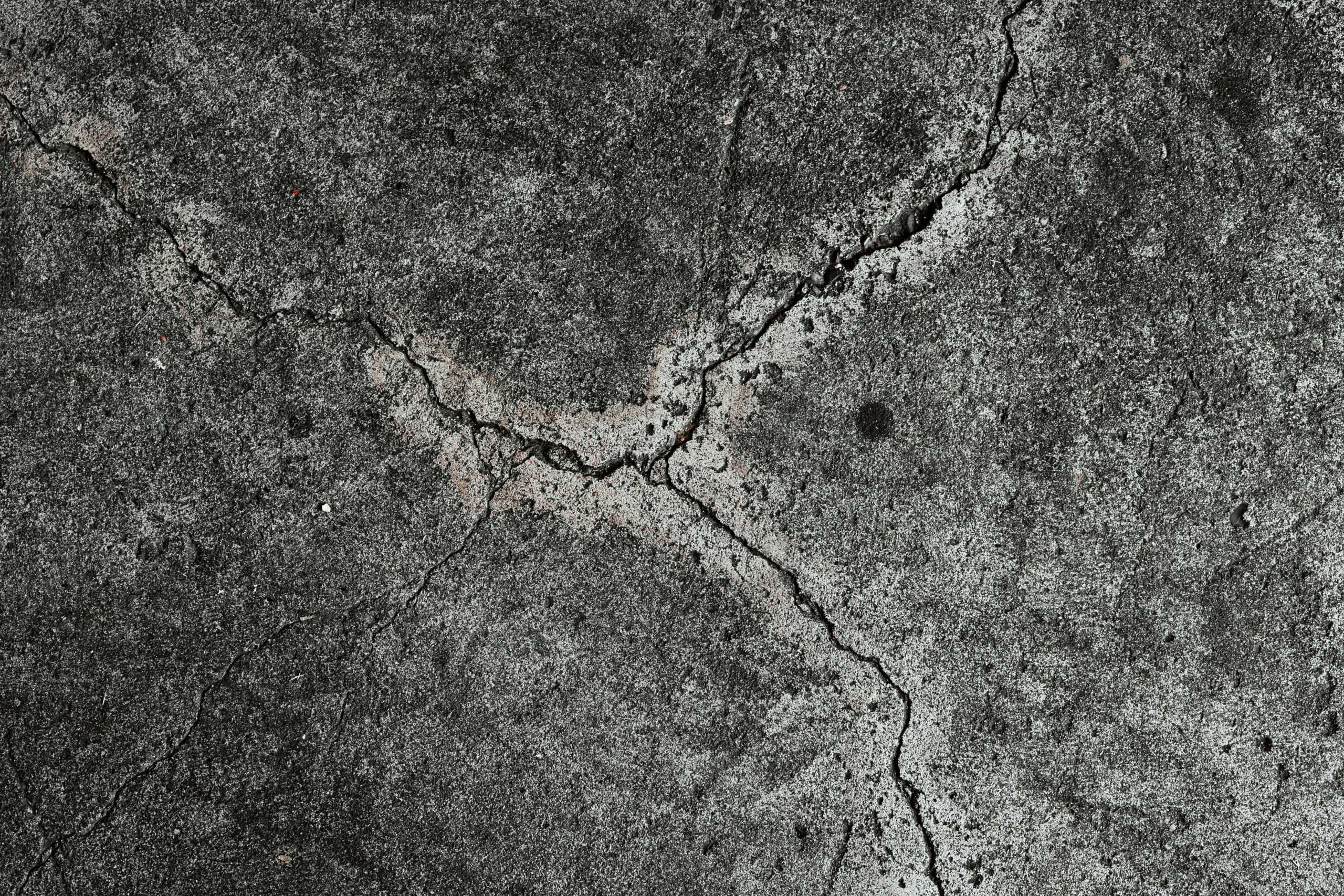by Luke Cronin
Share
by Luke Cronin
Share

Welcome to the final installment of our Foundation Repair series! This post focuses on slab repairs, a critical aspect of maintaining the integrity of your home’s foundation. Understanding the symptoms and causes of slab issues, distinguishing between normal and abnormal movement, and knowing the best repair methods can help you keep your home safe and stable.
Symptoms of Slab Problems
Cracks in the Slab
-
- Small, hairline cracks can be normal, but large or widening cracks may indicate serious underlying issues requiring concrete slab repair.
Uneven Floors
-
- Floors that feel uneven or have noticeable slopes are a common sign of slab movement or settling, pointing to the need for slab foundation repair.
Sticking Doors and Windows
-
- If doors and windows are difficult to open or close, it may be due to slab movement affecting the frame alignment, suggesting structural foundation repair is needed.
Cracks in Walls
-
- Cracks appearing in interior or exterior walls, especially above doorways and windows, can signal foundation settlement and the need for foundation settlement repair.
Gaps Between Walls and Floors
-
- Noticeable gaps or separation between walls and floors can indicate that the slab is shifting or settling unevenly, requiring immediate foundation repair.
Causes of Slab Issues
Soil Movement
-
- Expansive soils that swell with moisture and shrink when dry can cause significant slab movement, leading to house settlement.
Poor Compaction
-
- Inadequately compacted soil beneath the slab can settle over time, leading to slab settlement and the need for concrete slab foundation repair.
Water Damage
-
- Excessive moisture from poor drainage, plumbing leaks, or high water tables can weaken the soil and cause slab movement, necessitating slab leak repair and foundation repair.
Tree Roots
-
- Roots from trees planted too close to the foundation can grow beneath the slab, causing lifting or cracking that requires structural repair.
Normal vs. Abnormal Movement
Normal Movement
- Minor hairline cracks are typical as concrete slabs naturally expand and contract with temperature changes.
- Small settling that occurs uniformly is generally not a cause for concern.
Abnormal Movement
- Large, widening, or uneven cracks suggest significant slab movement requiring concrete slab repair.
- Noticeable lifting or sinking of sections of the slab, causing uneven floors.
- Persistent issues with doors and windows sticking indicate abnormal foundation movement.
How to Fix Slab Issues
Mud Jacking
- What Is It? Mud jacking, also known as slab jacking, involves pumping a mixture of water, aggregate, and cement (slurry) under the slab to lift it back to its original position.
- Process:
- Small holes are drilled into the slab at strategic locations.
- The slurry is injected under the slab through the holes.
- The slab is lifted and leveled as the mixture fills voids and stabilizes the foundation.
- Best For: Mud jacking is suitable for smaller areas of settlement and when the slab is mostly intact but uneven. It’s a cost-effective solution for concrete slab repair and can help fix foundation settlement issues.
Slab Replacement
- What Is It? Involves removing the damaged slab and pouring a new one.
- Process:
-
-
- The existing slab is broken up and removed.
- The underlying soil is re-compacted or replaced as needed.
- A new slab is poured and allowed to cure.
-
- Best For: Slab replacement is necessary when the slab is severely damaged, has extensive cracking, or when previous repairs have failed. This method ensures comprehensive concrete slab foundation repair and is ideal for severe foundation settlement repair.
Conclusion
Slab issues can lead to significant structural problems if not addressed promptly. By recognizing the symptoms and understanding the causes, you can take proactive steps to maintain the stability of your home. Whether through mud jacking or slab replacement, addressing these issues with the help of a qualified structural engineer ensures the longevity and safety of your foundation. If you suspect slab problems, don’t hesitate to reach out for professional assistance. Thank you for joining us on our Foundation Repair series, and we hope these insights help you maintain a strong and stable home. For any concerns regarding foundation settlement, basement foundation repair, or structural foundation repair, always consult with an experienced structural engineer.

